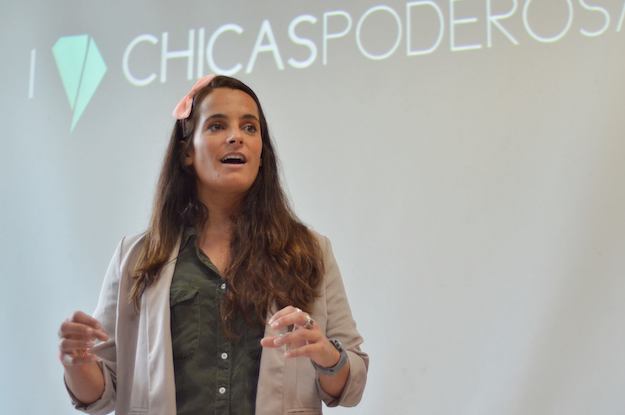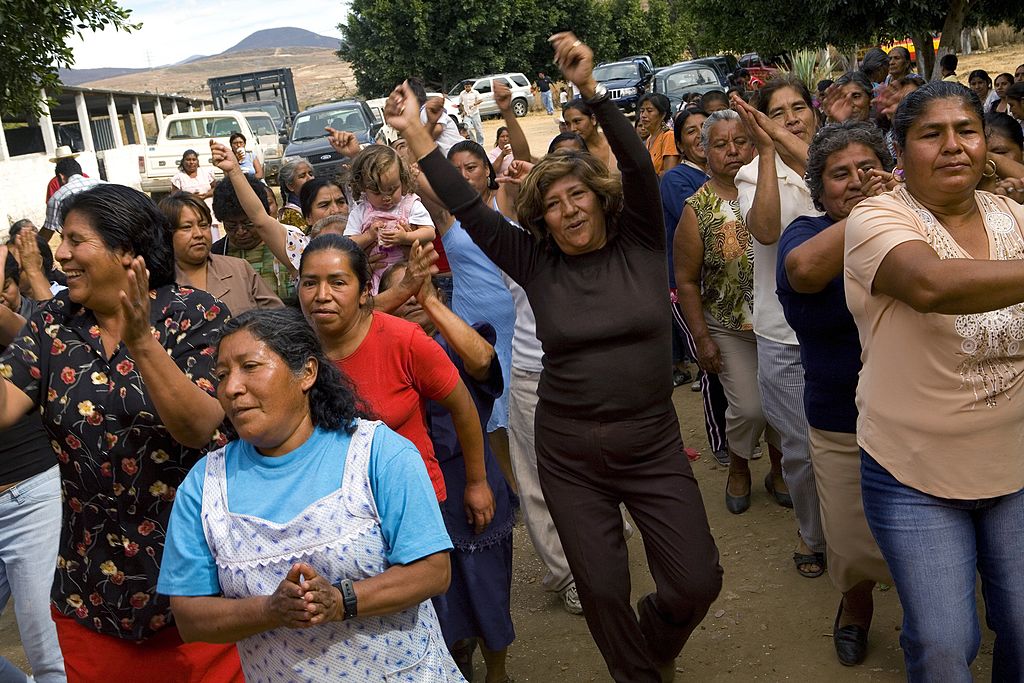This article has been corrected
When Mariana Santos started working as a designer in digital newsrooms, she was struck by the fact that she was often the only woman on the team. This alarmed her. As journalism continues its rapid shift to digital platforms, women had to lead the way – or they would be left behind, she reasoned.
“If women don’t know how to work in this medium we’re not going to be able to tell our stories,” she told AQ.
To tackle this, she founded Chicas Poderosas (or Powerful Girls), a nonprofit organization whose goal is to “change the face of media, one woman at a time.”
So far, the group has helped train 5,000 women journalists to thrive in Latin America’s quickly evolving newsrooms. Over a recent weekend in Manaus, in northern Brazil, 20 women – journalists, indigenous rights activists, students, teachers, and designers – gathered to discuss ways to increase women’s visibility in the Amazon. They brainstormed ideas ranging from a documentary on female leadership to a feminist writing competition, and took part in workshops on digital storytelling and community building.
The event, dubbed a Design Thinking Sprint, was part of the organization’s strategy to get “women to be more digitally savvy so they can gain an edge and start their own news organizations,” Santos said.
The opportunity to take Chicas Poderosas from idea to reality came in 2013, when, as part of an International Center for Journalists fellowship, she trained journalists at La Nación newspaper in San José, Costa Rica, and led workshops on interactive design, programming and data visualization throughout Latin America.
The following year, during a fellowship at Stanford University, Santos developed Chicas Poderosas as a mentorship program. She and Vicki Hammarstedt, the director of digital media at Berkeley’s Advanced Media Institute (and co-director of Chicas Poderosas), brought multimedia journalists from publications like The New York Times, The Guardian, and ProPublica to cities throughout Latin America to train local journalists.
Since then, participants have set up 13 local chapters in the region. The United States and Portugal, where Santos is from, each have a chapter as well. Despite the name, the organization is open to chicos, too. “If we want to change the narrative we need to have this conversation with both men and women,” Santos said.
The need for more women in the newsroom, broadly speaking, is evident. Although they have made big gains in the Latin American media landscape in recent years – women represented 41 percent of reporters in the region in 2015, up from 27 percent in 2000 – they lag behind in leadership positions, holding just over 20 percent of board seats and 30 percent of top-level management positions at media companies in Latin America.
This has consequences for individual women as well as for news organizations. A dearth of women in leadership positions can hurt the bottom line – recent studies show a correlation between female leadership and profitability – and can also create a toxic work environment.
“If you’re a woman in media in Latin America, you’re going to be judged, manhandled and underpaid,” said Luisa Ortiz, a tech entrepreneur, ambassador for Chicas Poderosas and former journalist. “What happened with Harvey Weinstein (the disgraced Hollywood producer) happens in Latin American newsrooms every day.”
Ortiz, 45, said that she was often discouraged from experimenting with digital storytelling early in her career.
“Whenever I wanted to work on something technical in terms of the tools I was using, the response was ‘let the engineers handle this.’ It was a very lonely space,” Ortiz told AQ. “Chicas provides a strong sense of sisterhood.”
Ortiz recently found out how that community can transcend borders. On Sept. 19, a 7.1-magnitude earthquake struck near her hometown of Mexico City. Ortiz, who had been sharing reports of damage and casualties with fellow Chicas via Whatsapp, quickly assembled a team of designers, developers and project managers in Mexico, Colombia and Argentina. They developed an interactive portal that offered up-to-date information on recovery efforts, volunteer opportunities, and where to send aid. InfoSismo Mex went live the next morning and became a trending hashtag on Twitter.
Santos said a number of other projects by Chicas Poderosas have resonated across the region: In Colombia, the organization has partnered with First Draft News, a nonprofit organization that helps media professionals verify news from social media, to train women in fact-checking ahead of next year’s legislative and presidential elections. In Mexico, Maria Salguero, a geophysicist, developed what has become one of the country’s most comprehensive maps of femicides.
Santos believes having more women in leadership positions means a broader array of topics will be covered. “Because men often lead newsrooms, they often shape the news and the agenda,” Santos said. “That means half of the voices are not being represented, and a lot of stories are not being told.”
But Santos and others believe that may be starting to change, as women climb the echelons of Latin American newsrooms.
“There is a cadre of new, younger female journalists who are leading a lot of innovation,” Maria Teresa Ronderos, director of the Open Society Program on Independent Journalism, told AQ. She points to women at the helm of news organizations like Quinto Elemento Lab in Mexico, Agência Pública in Brazil, and La Silla Vacía in Colombia.
Ronderos, the former editor of Semana, a prominent Colombian weekly, participated in a recent Chicas Poderosas event in Bogotá. “Chicas Poderosas is riding on a wave of change, and they’re also helping it happen faster,” Ronderos said.
If Santos has her way, there will be even more women at the helm of Latin American newsrooms very soon. Next year in Brazil, Chicas Poderosas is launching the New Ventures Lab, a 17-week accelerator program for women-led media start-ups. The program, funded by a grant from Open Society Foundations, includes training, mentorship and workshops similar to the Design Sprint Weekend. Santos said 250 women have applied for the program’s 20 spots.
Santos doesn’t have any plans of slowing down, and she hopes to eventually bring the accelerator program to new countries, like Mexico, Colombia and Costa Rica.
“We envision this as an ongoing platform for women to develop independent news organizations and projects with the support they need to effect change in their countries.”
This article was corrected to reflect the chronology of Santos’ founding of Chicas Poderosas
—
Renwick is a freelance journalist.








